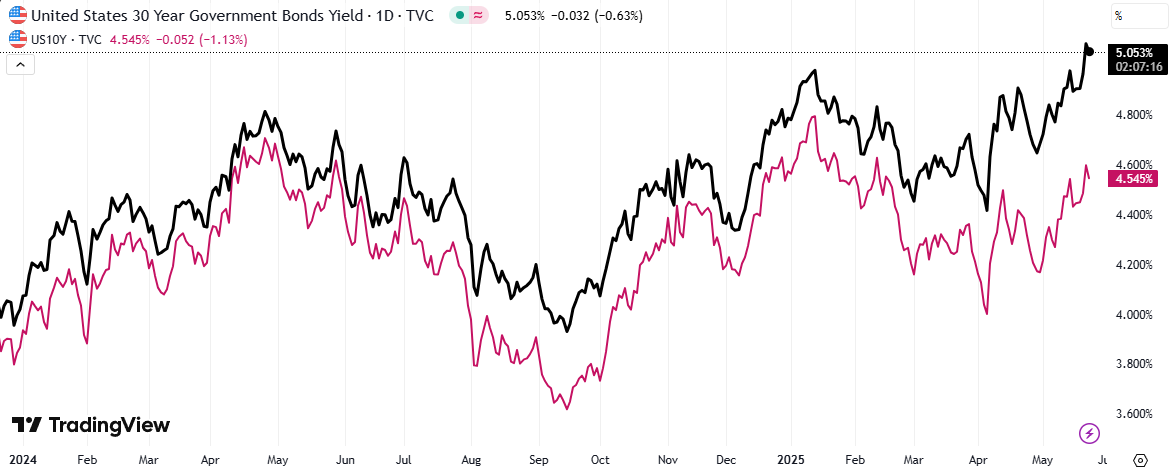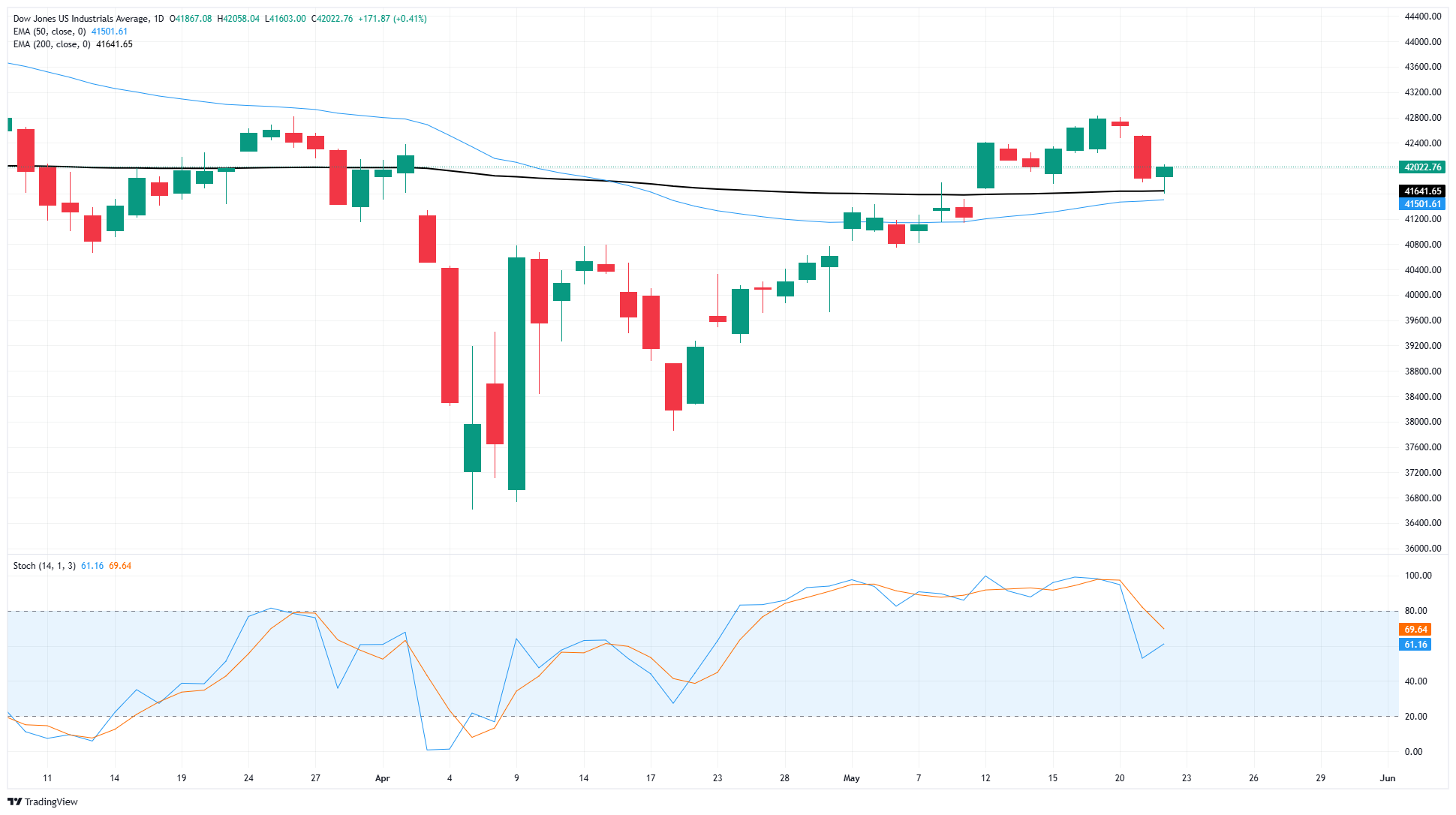Dow Jones Industrial Average finds its footing as bond yields ease back
- The Dow Jones found a foothold near the 42,000 level on Thursday.
- President Trump’s tax bill survived the House and now heads to the Senate.
- US PMI figures rebounded firmly in May, flouting market forecasts.
The Dow Jones Industrial Average (DJIA) bounced off a fresh bottom on Thursday, clawing its way out of the basement after a sharp tumble during the midweek trading window. On Wednesday, bond yields rose and equities took a hit as fresh concerns about the United States(US) government’s ever-increasing debtload emerged. Investors have seemingly shrugged off their concerns and resumed bidding up stocks after Congressional Republicans successfully pushed through President Trump’s “big, beautiful bill” on the federal budget and taxation, which is expected to add trillions to the federal deficit over the next ten years.
Despite a bullish tilt to Thursday’s market action, bond markets remain on shaky footing. The 30-year Treasury yield is still parked north of 5%, and despite a slight easing, the 10-year yield remains above 4.5%. Rising funding costs come at a time when the Trump administration is hoping to help alleviate budget pressure from its planned steep tax cuts using cheap debt. However, rising (or at least sticky) bond yields, coupled with a Federal Reserve (Fed) that remains staunchly apprehensive about cutting interest rates ahead of possible economic fallout from Trump tariffs, are systematically taking a hatchet to those plans.

US Purchasing Managers Index (PMI) figures rose in May as business operators pivoted toward optimism more than expected in the aggregate. The Services and Manufacturing components of the indexed business survey results both rose to 52.3, from 50.2 for Services and 50.8 for Manufacturing.
Dow Jones price forecast
The Dow Jones Industrial Average tested the 200-day Exponential Moving Average (EMA) near 41,640 early Thursday before equity markets found their footing and pushing intraday bids back into the 42,000 handle. Price action is still overall bullish, but a near-term decline has bled some of the wind out of the Dow Jones’ sails.
Dow Jones daily chart

Dow Jones FAQs
The Dow Jones Industrial Average, one of the oldest stock market indices in the world, is compiled of the 30 most traded stocks in the US. The index is price-weighted rather than weighted by capitalization. It is calculated by summing the prices of the constituent stocks and dividing them by a factor, currently 0.152. The index was founded by Charles Dow, who also founded the Wall Street Journal. In later years it has been criticized for not being broadly representative enough because it only tracks 30 conglomerates, unlike broader indices such as the S&P 500.
Many different factors drive the Dow Jones Industrial Average (DJIA). The aggregate performance of the component companies revealed in quarterly company earnings reports is the main one. US and global macroeconomic data also contributes as it impacts on investor sentiment. The level of interest rates, set by the Federal Reserve (Fed), also influences the DJIA as it affects the cost of credit, on which many corporations are heavily reliant. Therefore, inflation can be a major driver as well as other metrics which impact the Fed decisions.
Dow Theory is a method for identifying the primary trend of the stock market developed by Charles Dow. A key step is to compare the direction of the Dow Jones Industrial Average (DJIA) and the Dow Jones Transportation Average (DJTA) and only follow trends where both are moving in the same direction. Volume is a confirmatory criteria. The theory uses elements of peak and trough analysis. Dow’s theory posits three trend phases: accumulation, when smart money starts buying or selling; public participation, when the wider public joins in; and distribution, when the smart money exits.
There are a number of ways to trade the DJIA. One is to use ETFs which allow investors to trade the DJIA as a single security, rather than having to buy shares in all 30 constituent companies. A leading example is the SPDR Dow Jones Industrial Average ETF (DIA). DJIA futures contracts enable traders to speculate on the future value of the index and Options provide the right, but not the obligation, to buy or sell the index at a predetermined price in the future. Mutual funds enable investors to buy a share of a diversified portfolio of DJIA stocks thus providing exposure to the overall index.

